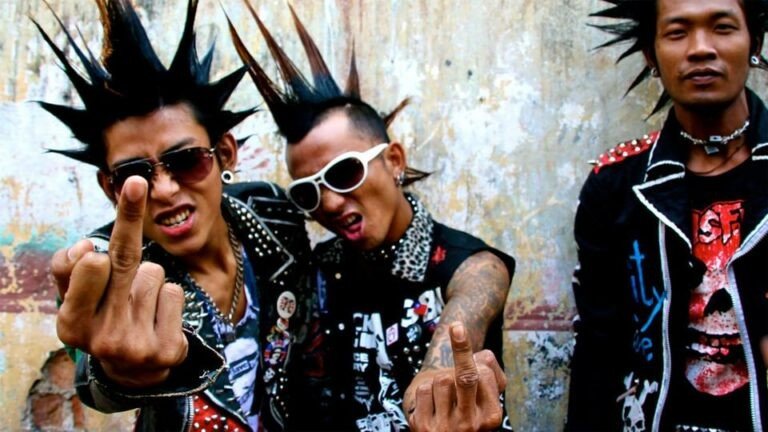Source: Africa Publicity
In the bustling city of Lagos, Nigeria, streetwear had become more than just a fashion trend; it was a statement of identity and culture for the youth. At the heart of this movement was a young man named Olu. With his keen sense of style and entrepreneurial spirit, Olu had become a prominent figure in Lagos’s streetwear scene.
Olu grew up in Ajegunle, a neighborhood known for its vibrant community and resilient spirit. From a young age, he was fascinated by fashion. He spent hours flipping through fashion magazines and watching videos of streetwear fashion shows from around the world. Despite the challenges his family faced, Olu’s mother, Amara, always encouraged his passion. She worked as a seamstress, and together, they would create unique pieces from old clothes.
As Olu entered his teenage years, he began to notice how fashion could be a powerful form of self-expression. He saw how the clothes people wore could convey messages about their identity, beliefs, and aspirations. Inspired, Olu started his own streetwear brand called “Urban Roots.” His designs combined traditional African patterns with modern streetwear aesthetics, creating a unique fusion that resonated with the youth of Lagos.
One of Olu’s closest friends, Amina, was instrumental in helping him grow Urban Roots. Amina, who hailed from the city of Kano in northern Nigeria, was a talented photographer with an eye for capturing the essence of street culture. Together, they documented the lives and styles of young people across Lagos, showcasing their creativity and resilience.
As Urban Roots gained popularity, Olu and Amina decided to take their brand to other parts of Africa. They traveled to Accra, Ghana, where they met Kwame, a graffiti artist known for his bold and colorful murals. Kwame’s art was a reflection of Accra’s vibrant youth culture, and he quickly became a collaborator for Urban Roots. His graffiti designs were incorporated into their clothing, adding a new dimension to the brand.
In Cape Town, South Africa, Olu and Amina connected with Zola, a dancer who was making waves in the street dance scene. Zola’s dance crew was known for their incredible moves and stylish outfits. She believed that streetwear was an essential part of their performance, as it allowed them to express their individuality and cultural heritage. Zola introduced Olu to local designers and helped organize a streetwear fashion show that featured Urban Roots alongside South African brands.
While traveling through Nairobi, Kenya, Olu and Amina met Juma, a music producer who was at the forefront of the city’s hip-hop movement. Juma’s music was a blend of traditional Kenyan sounds and contemporary beats, much like Urban Roots’ fusion of old and new. Juma and his crew became ambassadors for Urban Roots, wearing the brand’s clothes in their music videos and at their concerts.
Back in Lagos, Urban Roots was thriving. The brand had become a symbol of youth culture across Africa, representing the creativity, resilience, and unity of the continent’s young people. Olu’s journey was not without challenges, but his determination and the support of his friends helped him overcome obstacles and achieve his dreams.
One evening, as Olu and Amina sat on the rooftop of their studio, overlooking the city lights of Lagos, they reflected on how far they had come. They talked about their dreams for the future and how they wanted to continue using fashion to inspire and empower the youth. Amina suggested organizing a pan-African streetwear festival, where young designers, artists, and performers from across the continent could showcase their talents.
Olu loved the idea. The festival, which they named “Urban Vibes,” would be a celebration of African youth culture. They envisioned a space where young people could connect, collaborate, and celebrate their creativity. With the help of their friends Kwame, Zola, and Juma, they began planning the event.
Months of hard work and preparation followed. The team reached out to designers, artists, and performers from all over Africa. They secured sponsors and venues, and used social media to create buzz around the event. The anticipation for Urban Vibes was palpable, and young people from across the continent were excited to participate.
When the day of the festival finally arrived, Lagos was buzzing with energy. The streets were filled with vibrant colors and the sounds of music and laughter. The festival featured fashion shows, dance battles, live music performances, and art exhibitions. It was a celebration of African creativity and the power of streetwear as a unifying force.
Olu stood on the stage, looking out at the diverse crowd of young people who had come together for Urban Vibes. He felt a sense of pride and accomplishment, knowing that Urban Roots had played a role in bringing them together. As he addressed the crowd, he spoke about the importance of staying true to oneself and using creativity to overcome challenges.
“Streetwear is more than just clothes,” Olu said. “It’s a way for us to express who we are and where we come from. It’s a way for us to tell our stories and connect with each other. Let’s continue to inspire and uplift each other, and show the world the power of African youth culture.”
The crowd erupted in applause, and Olu knew that this was just the beginning. Urban Roots and Urban Vibes had become symbols of hope and inspiration for young people across Africa. As the festival continued, Olu and his friends celebrated their achievements and looked forward to the future, excited for the endless possibilities that lay ahead.
Through fashion, art, music, and dance, Olu and his friends had created a movement that transcended borders and brought young people together. Streetwear had become a powerful force in African youth culture, and Olu’s journey was a testament to the resilience, creativity, and unity of the continent’s young generation.



